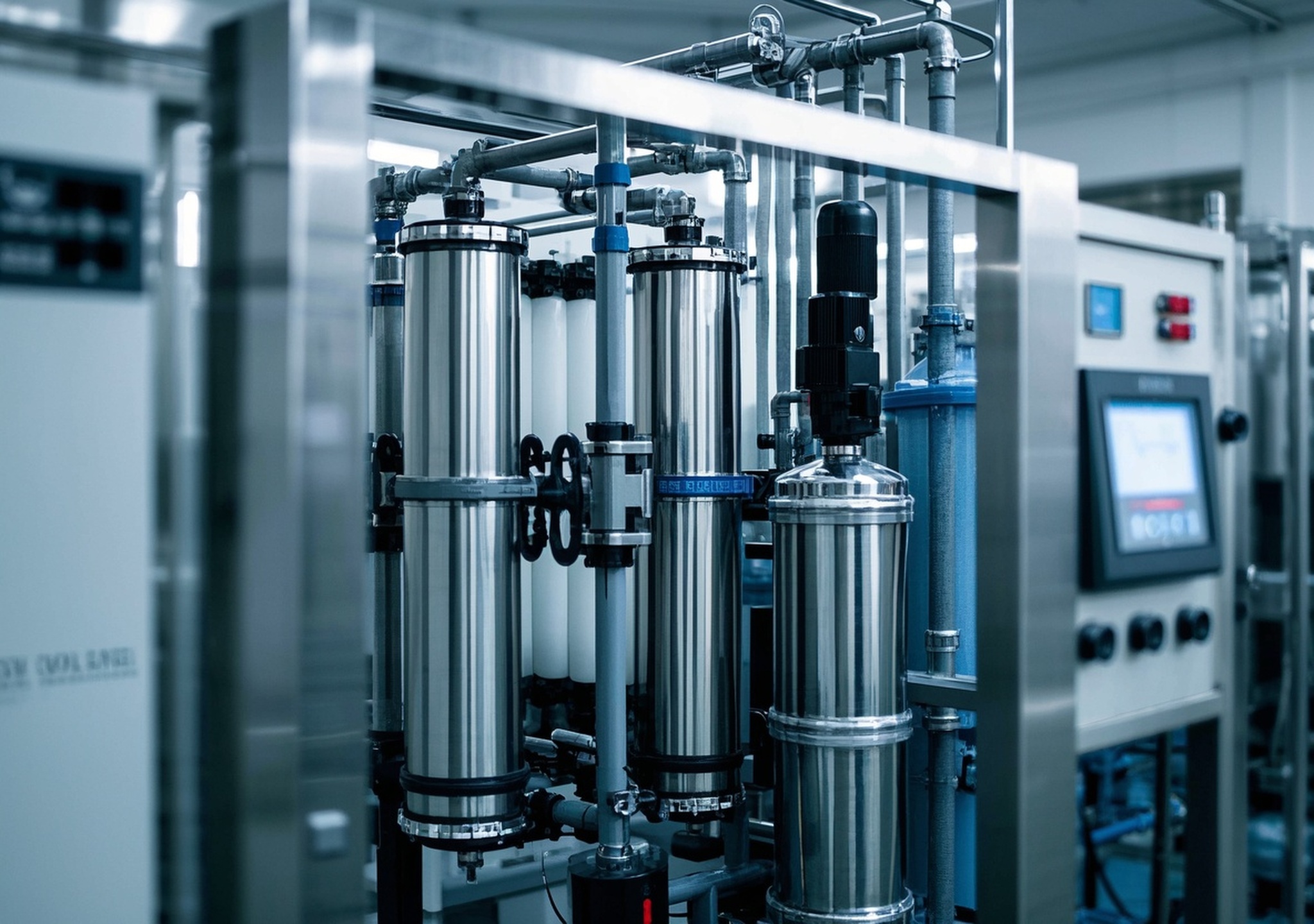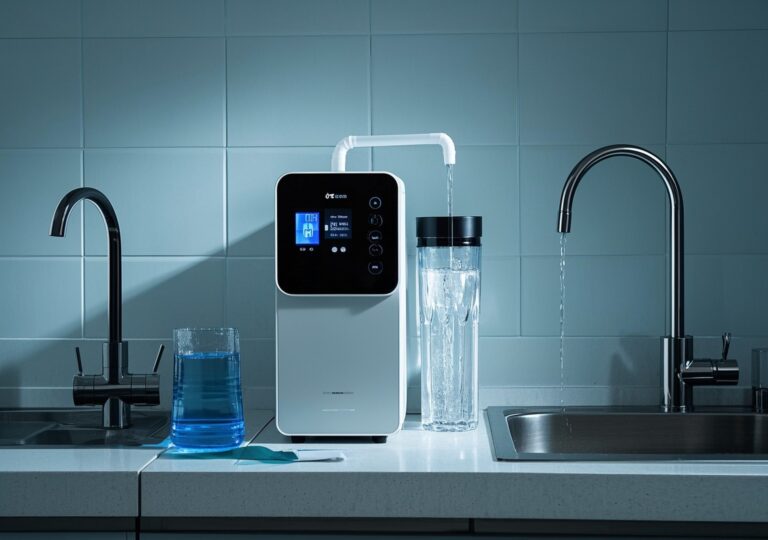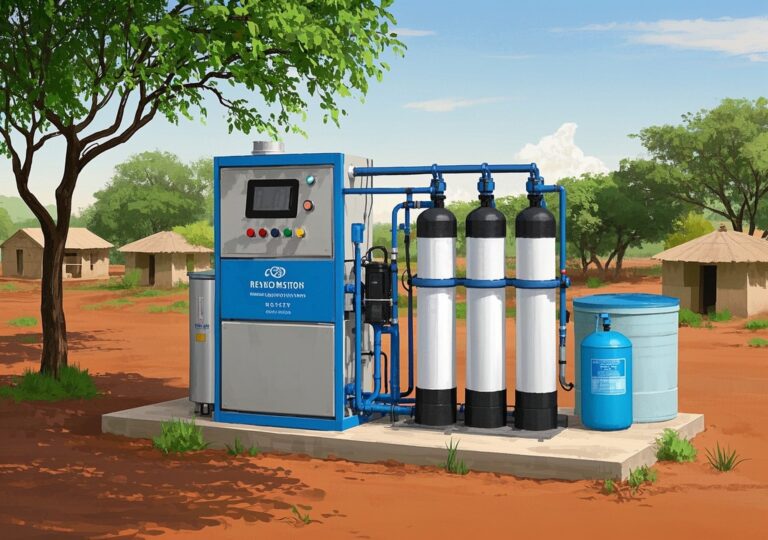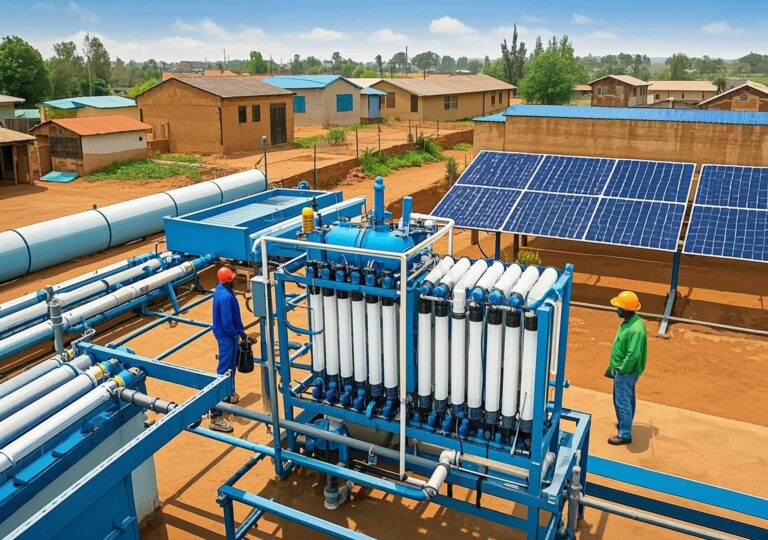Quirky Insights: How RO Water Treatment Plants Boost Industrial Yields

Quirky Insights: How RO Water Treatment Plants Boost Industrial Yields
In today’s highly competitive industrial environment, maximizing output efficiency often hinges on the quality and reliability of water resources. Reverse Osmosis (RO) water treatment plants have emerged as transformative solutions that elevate industrial processes by ensuring consistent high-grade water supply. This article dives deep into the workings, economics, and practical impacts of ro water treatment plants, integrating authoritative market data and real-world industry experiences to provide a nuanced understanding of their industrial utility.
1. Product Overview: Defining the Scope and Suitability of RO Water Treatment Plants
RO water treatment plants are specialized systems designed to purify water through semi-permeable membranes that remove dissolved solids, contaminants, and microorganisms. These plants serve a broad range of industrial sectors, including:
- Mining: For dust suppression, mineral processing, and cooling
- Food and Beverage Processing: Ensuring product safety and consistency
- Pharmaceutical and Cosmetics: Achieving ultrapure water standards for formulations
- Laboratories and Electronics: Supplying ultrapure and deionized water critical for sensitive experiments and manufacturing
- Municipal and Utility Water Treatment: Treating river, underground, well, and municipal feedwater
- Boiler Feedwater: Preventing scale and corrosion in steam generation
The adaptability of RO systems to treat diverse water sources — from highly contaminated groundwater to brackish water — makes them indispensable across industrial applications where water quality directly influences yield and process stability.
2. Technical Principles and Core Components of RO Water Treatment Plants
At the heart of any RO plant lies the membrane separation technology. Water is forced through a semi-permeable membrane under high pressure, which selectively allows water molecules to pass while blocking salts, bacteria, organics, and other impurities. Key components include:
- High-pressure pumps: Create the driving force necessary to overcome osmotic pressure
- Pre-treatment filters (sand filters, carbon filters): Remove suspended solids and chlorine to protect membranes
- RO membranes: Thin-film composite membranes optimized for high flux and salt rejection
- Automated control systems: Programmable logic controllers (PLCs) manage flow rates, pressure, and cleaning cycles, enabling consistent operation and remote monitoring
- Post-treatment modules: Including UV sterilizers or remineralization cartridges to meet final water quality specs
This blend of mechanical filtration, membrane technology, and digital automation ensures RO systems operate efficiently with minimal downtime — a critical factor in industrial settings.
3. Pricing Analysis: Breaking Down the Investment Components
| Cost Element | Description | Typical Cost Range |
|---|---|---|
| Core RO System | Membranes, pumps, pressure vessels, basic control panel | 40-50% of total CAPEX |
| Pre-treatment Modules | Filtration, softening, pH adjustment systems | 15-20% |
| Post-treatment Elements | UV sterilization, mineral addition, polishing filters | 10-15% |
| Installation and Commissioning | Site engineering, labor, testing | 15-20% |
| Operation & Maintenance (OPEX) | Membrane replacement, energy use, consumables | Annual, ~5-10% of CAPEX |
Industrial clients often prioritize systems offering long membrane lifespan and energy-efficient designs to optimize total cost of ownership. From my experience, selecting a system with modular expandability and automated diagnostics can reduce operational disruptions and maintenance expenditures by over 30% long-term.
4. Performance Specifications and Quality Assurance
The performance of an RO water treatment plant hinges on stringent quality standards. Typical key metrics include:
- Salt Rejection Rate: ≥ 98% to ensure ultrapure water where needed
- Recovery Rate: 75% – 85%, balancing throughput and membrane life
- Water Production Capacity: Customizable from hundreds to thousands of cubic meters per day
- Material Standards: Corrosion-resistant stainless steel and FDA-compliant polymer components wherever potable or pharmaceutical water is required
- Automation Level: Real-time monitoring with alarms for TMP (transmembrane pressure), conductivity, and flow
During my tenure managing a food processing plant retrofit, adherence to such parameters led to a 20% improvement in production line uptime and a 15% reduction in water waste.
5. Market and Application Scenarios: Aligning Technology with Local Needs
According to a detailed market analysis by Grand View Research, the global water treatment systems industry, including RO plants, was valued at USD 42.1 billion in 2024 and is forecasted to nearly double by 2033 with a CAGR of 8.7%. The industrial sector dominates demand, primarily driven by power, chemicals, pharmaceuticals, and food sectors demanding stringent water quality for process and wastewater management.
In Asia-Pacific, the largest revenue contributor for point-of-entry RO systems (32% market share in 2024), rapid industrialization alongside worsening source water quality from rivers and groundwater places RO plants at the forefront of sustainable water use strategies.
Specific adaptations address local water characteristics: high salinity brackish water in coastal areas requires multi-stage RO, whereas agricultural regions with pesticide contamination integrate advanced oxidation post-treatments. Customizing the RO solution to such nuances ensures maximum yield improvements and operational resilience.
6. Industry Case Studies: Proven Outcomes of RO Plant Deployment
Case Study 1: Pharmaceutical Manufacturing Plant
In a pharmaceutical manufacturing site I consulted with, an RO system with integrated ultrafiltration and UV polishing was installed to treat municipal and well water blends. Within six months, microbial contamination incidents dropped by 95%, meeting USP water quality standards and enabling uninterrupted batch production. This upgrade reduced product rejection rates by 12% and boosted annual revenue by approximately USD 1.2 million.
Case Study 2: Food Processing Facility
At a mid-sized food processing plant handling fruit juices, shifting to an RO treated water supply improved ingredient consistency by eliminating variable mineral content and turbidity. Our implementation included automated cleaning cycles and real-time water recovery optimization. The plant saw a 15% decrease in downtime and a 10% reduction in chemical cleaning chemical use over the first year.
Case Study 3: Mining Operation
One mining operation implemented an industrial RO plant alongside sedimentation to recycle process water used in ore flotation. This system reduced freshwater intake by 40%, markedly cutting raw water sourcing costs and environmental discharge volume, enabling compliance with stringent local water discharge regulations.
7. Customization and Service Support: Tailored Solutions for Diverse Needs
Effective RO water treatment plants are rarely “one-size-fits-all.” Customizable features often include:
- Pre-treatment: Softening, anti-scalants dosing, and sediment filtration based on feedwater analyses
- Post-treatment: Demineralization, UV sterilization, or ozone treatment to meet specific industrial water-grade requirements
- Automation & Remote Monitoring: Integration with SCADA systems for real-time data, predictive maintenance, and operational alerts
- Installation & After-sales: Professional site surveys, commissioning services, staff training, and preventive maintenance contracts to maximize uptime and membrane lifespan
In my experience, the most successful projects incorporate ongoing technical support and rapid response teams, which reduce troubleshooting time by up to 50% during the first year of operation.
8. Manufacturers and Competitive Advantages
Leading manufacturers of industrial RO plants typically showcase:
- International certifications such as ISO 9001 and NSF/ANSI standards ensuring quality and safety
- Proprietary membrane technologies and patents enhancing performance and durability
- Robust R&D capacity for custom system designs addressing challenging water chemistries
- Proven track record in high-profile installations across mining, pharmaceutical, and food industries
Choosing a partner with demonstrated expertise in your industry and region can significantly accelerate project success and ROI realization.
9. Conclusion and Investment Recommendations
RO water treatment plants represent a critical technology investment that directly impacts industrial output and sustainability. Integrating authoritative market insights and hands-on operational experiences, it is clear that:
- Industries with high purity water demands or variable feedwater quality derive the greatest performance improvements
- Long-term operational costs and system resilience hinge on selecting modular, automated RO solutions with appropriate pre- and post-treatment
- Local market and water quality specifics must drive design customization to maximize cost-effectiveness
- Partnering with established manufacturers offering comprehensive service support ensures dependable plant operation and accelerated ROI
Based on projected industry growth at a CAGR near 9%, investing in well-engineered RO water treatment plants offers both immediate yield enhancement and durable competitive advantage in industrial water management.
References:
- Grand View Research – Water Treatment Systems Market Size | Industry Report, 2033




